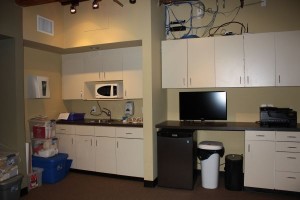
Proper preparation and cooking of food is an essential part of food safety. Many are aware of the proper preparation tips but many may also not know that there is an ideal temperature to cooking food. Inadequate or improper preparation and cooking can lead to many foodborne illnesses, which is commonly caused by bacteria but can also be caused by parasites and viruses. Some of these illnesses include salmonellosis, botulism, campylobacter, E. coli and Noro virus.
Tips for Preparing and Cooking Food
The kitchen is said to contain the most germs at home. The following are tips to help properly prepare and cook foods. These tips do not guarantee complete prevention of foodborne illnesses, they can help significantly reduce risk.
- Wash hands with warm water and soap before preparation commences, after touching the trash bin, going to the toilet, and after touching raw food.
- When preparing food, keep it out of the fridge in the shortest time possible.
- Handle raw and cooked food separately. This is done to avoid cross-contamination.
- Ensure that one cooks food the at right temperature to kill all microbe. The right temperature is 75 ºC or higher. Use a thermometer to check the internal temperature of the food/
- When cooking mince, sausages, whole chickens, or stuffed meats, cook right through the centre. Make sure that the meat is no longer pink and that juices should be clear.
- When cooking whole cuts of red meat, such as steak and chops, it is generally okay to cook based on own preference as bacteria is mostly on the surface.
- Cook fish until the surface easily flakes with a fork.
- Ensure that that egg products are cooked thoroughly.
Preparing and Cooking: High-risk Foods
It is particularly more important to note high-risk foods. High-risk foods are more prone those foods wherein bacteria can grow more easily, thus extra precaution should be given when handling these foods. These high-risk foods include:
- Raw and cooked meat, including poultry
- Seafood
- Casseroles, curries, and lasagne
- Dairy products
- Egg and egg products
- Hams, salamis and the like
- Prepared salads
- Prepared fruit salads
- Cooked rice and pasta
- Ready to eat foods
Tips for Preparing and Cooking High-risk Foods
The following are tips for
href=”http://www.leanonlamb.com/cooking/”>preparing and cooking high-risk foods to help ensure food safety.
- Avoid the temperature danger zone wherein bacteria is at highest risk of multiplying. This zone is between 5 ºC and 60 ºC.
- If the high-risk foods were in the temperature danger zone for two hours, reheat, refrigerate or consume the food.
- If the high-risk foods were in the temperature danger zone for more than two hours but less than four hours, consume immediately.
- If the high-risk foods were in the temperature danger zone for more than four hours, throw out.
Disclaimer: This article does not provide medical advice and should not be substituted for formal training. The information given should not be used for self-diagnosis. Seek medical attention when necessary. It is important to recognise potential medical emergencies at all times to avoid complications from developing. To learn more about food safety and the proper preparation and cooking of food, enrol in First Aid Courses and CPR Courses with Red Cross Training.
Online Sources:
http://www.nhs.uk/Livewell/homehygiene/Pages/Foodhygiene.aspx
www.betterhealth.vic.gov.au/bhcv2/bhcarticles.nsf/pages/Food_safety_when_cooking
